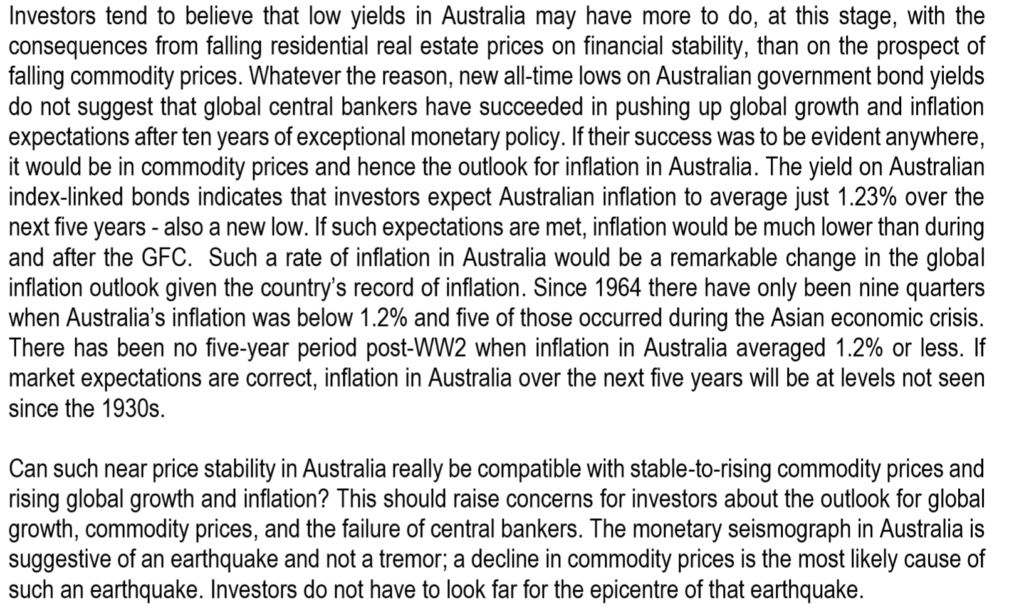Russell Napier writes for Solid Ground…
‘Of all the recording devices that can reveal to an historian the fundamental movements of an economy, monetary phenomena are without doubt the most sensitive. But to recognize their importance merely as symptoms would do them less than full justice. They have been and are, in their turn, causes. They are something like a seismograph, which not only measures the movements of the earth but sometimes provokes them.’
Marc Bloch: “Le Probleme de l’or au Moyen Age”; Annales d’Histoire Economique et Sociale; 1953 Across the world many key government bond yields have fallen below both their 2009 and 2016 lows. In 2009 the market thought the world financial system was collapsing and a deflationary depression was imminent. Unless of course one had read Anatomy of The Bear: Lessons From Wall Street’s Four Great Bottoms! In 2016 the market thought that China was about to devalue its exchange rate and key, large commodity producing companies were on the verge of bankruptcy. These were both dark times but not so dark as to push key global bond yields to current levels.

As a financial analyst one is often asked, “Where do you see financial bubbles today?” When risk-free rates are this low it is easy to see them everywhere, but of course the biggest bubble must be in those so-called ‘risk free rates’ themselves. Remember these are the ‘risk-free’ assets many financial institutions are forced to hold to reduce their balance sheet risk! In the remainder of this newsletter we will look at what such low rates are telling us, why commodity prices will now move sharply lower, why Australia is heading for big trouble, and why US Treasuries are a buy.
Russell explains beautifully the importance of Australia’s low bond yield and its implication for rest of the world

read full article below ( Subscription required)